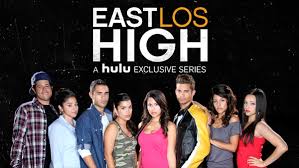The SXSW 2019 panels offered an unstable mix of flagrant self-promotion, corporate hype and industry insight. Buried in it all were nuggets of news.
Synergy.
Short-form video is circulating more broadly, and also finding synergies. Makers of shorts were happy to hear that airlines and hospitals are purchasing short films, and that some airlines are offering first-class passengers the opportunity to watch VR. As well, the shorts on news sites continue to flourish. Indeed, a video from The Atlantic, The Separated, showed at SXSW.

In The Separated, 5-year-old Jenri looks out of the plane window at an uncertain future.
Synergies for shorts are showing up. The Atlantic’s video editor, Kasia Cieplak-Meyr von Baldegg, whose team is now 16 people strong and growing, noted that extended audio for The Separated also became a segment of This American Life. Atlantic media gains most of its viewers on other platforms, especially YouTube and Facebook. There are also increasing synergies between podcasting and Hollywood, following Gimlet Media’s placement of Homecoming (and its recent sale to Spotify, based in part on its hit-making capacity).
Podcasting is turning into a powerhouse of its own. The Spotify news was followed quickly by the launch of Luminary, a VC-backed podcaster that’s puzzling analysts who can’t figure out how it’s going to claim a leading role in a highly decentralized production and distribution ecology. Nick Quah, of the authoritative newsletter HotPod, stressed that in a fast-changing but still protean business environment, audiences come first and money follows. Further, he said, “the brand is still me.” Commenting on the trend toward brand-sponsored podcasts, he said that the sponsorship wasn’t as important as the authenticity, because “you can always smell bullshit.”
Big data: friend or enemy? Frenemy.
Big data have come to the movies, making many filmmakers nervous. Several panels featured machine learning and artificial intelligence (AI) for story design in filmmaking. Yves Bergquist, from AI startup Corto, was frustrated by simplistic understandings of AI. On a panel, he noted that so far, big data haven’t generated the results long expected or feared. “That’s because the data is stupid and so are statisticians,” he said. “They don’t recognize that stories are symbolic, and art is human.” But he thinks Corto has cracked the code in a way that allows big data to inform creativity. He extolled the opportunities “to create maps that allow creatives to make more informed decisions.” But others, such as the reps from Storyfit.com, who were hyping similar software, emphasized more frankly how big data can streamline decision-making not for creatives but for studio executives and publishers, and help them reassure their shareholders. Good or bad for creatives, big data is probably unavoidable in production/distribution calculus, and these proprietary products make it easier if not cheaper.

East Los High attracted far more non-Latinx viewers than studio execs ever anticipated.
But data are also informing decisions enhancing diversity and inclusion. Mauricio Mota created East Los High, a Latinx-themed production, for Hulu after studio execs told him the “market” wasn’t ready for Latinx leads. With the highly positive streaming data Hulu gave him, he’s been able to go into meetings with real evidence that studio guesses about the market are just plain wrong.
Meanwhile CUNY’s Heidi Boisvert, a new media artist and technologist, has been designing a mixed-methods approach to assessing media impact. At her Limbic Lab, she’s combining survey research with biometric experimental research on audience reactions to media. Looking at political attitudes through preferences for TV shows, she’s discovered that we have a lot more in common that we think. Across the political spectrum, we share a love of crime shows, comedy, action adventure, and The Walking Dead. The more conservative you are, the less TV you watch. She’s still collecting data on the biometrics.
“But if a tool can be a weapon, should you build it?” she now asks herself. The combined knowledge of viewer reactions she’s gathering has been done in the spirit of encouraging social movements and open expression, but it could easily be used to manipulate public opinion in any direction. “I’ve always has built open source to increase inclusivity. But should I continue to do that? Can you even limit uses for these tools?
“We need to look at biological signatures. As tech shrinks into our hands and our bodies, as stimulus can adapt to feedback in real time, this is when the tools become potentially hazardous.”
She wasn’t the only person worried about surveillance and manipulation in a big-data era and an emergent Internet-of-Things (shortened to IoT at SXSW). Multiple panels involved creative handwringing without solutions. However, one thing is clear: regulation is not far away.
